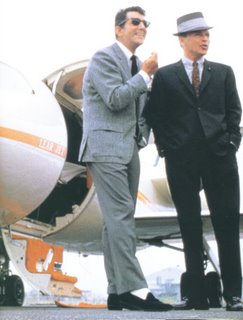 As a guy who learned to play guitar and piano at a young age, I'm sort of against kids playing games like Guitar Hero on the principle they could be learning to play a real instrument instead. I've never played any of them, despite having an Xbox 360. But that may be about to change. The maker's of the Rock Band games announced yesterday it was doing a game based around the music of The Beatles.
As a guy who learned to play guitar and piano at a young age, I'm sort of against kids playing games like Guitar Hero on the principle they could be learning to play a real instrument instead. I've never played any of them, despite having an Xbox 360. But that may be about to change. The maker's of the Rock Band games announced yesterday it was doing a game based around the music of The Beatles.The game will aim to feature the entire Beatles catalog and will offer an "experiential journey" off the band...
 "This game will take you on a journey from the Beatles first album Please Please Me until the last album at Abbey Road,” said Apple Corps CEO Jeff Jones. “It will span samples of the whole catalogue all the way through.” (source)
"This game will take you on a journey from the Beatles first album Please Please Me until the last album at Abbey Road,” said Apple Corps CEO Jeff Jones. “It will span samples of the whole catalogue all the way through.” (source)Here's an "imagining" someone did of the game using The Sims engine:
Still, despite the fact Sir Paul says "The project is a fun idea which broadens the appeal of The Beatles and their music. I like people having the opportunity to get to know the music from the inside out," I can't help thinking that many of the kids who'll play it would be better off "having the opportunity to get to know the music from the inside out" by learning to play it on an actual musical instrument. What if Guitar Hero (with Buddy Holly, Chet Atkins, Carl Perkins, Chuck Berry, Little Richard, and Elvis Presley songs) had been around back when John, Paul, George, or Ringo were teenagers in Liverpool??




















